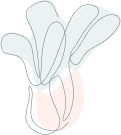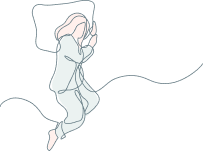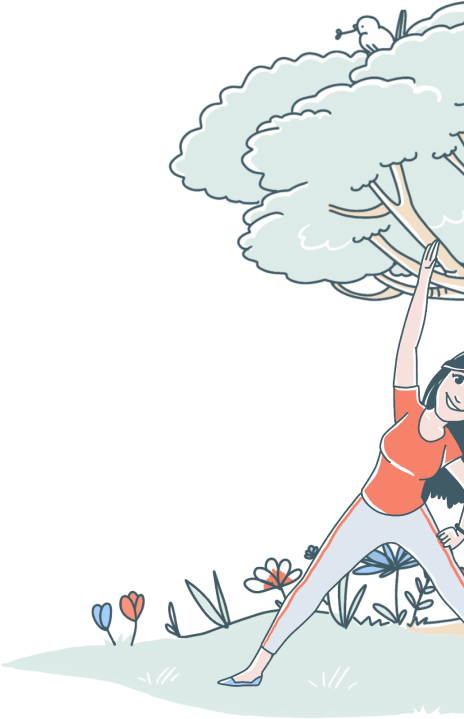
Better Health That
Lasts a Lifetime
This branch of medicine deals with research, prevention, and treatment of disorders caused by lifestyle factors. Sometimes we may not be aware of just how much our choices affect our health until something happens.
As defined by the American College of Lifestyle Medicine, lifestyle medicine is:
the use of evidence-based lifestyle therapeutic approaches, such as a predominantly whole food, plant-based diet, physical activity, adequate sleep, stress management, tobacco cessation, and other non-drug modalities, to prevent, treat, and, oftentimes, reverse chronic disease.
How it works
This preventative approach to chronic diseases relies on the combined effects of the four pillars of lifestyle medicine. These are:
- A better diet
- More exercise
- Reducing stress
- Building social connections
- Getting sound sleep
- Control of substance abuse
They sound simple, but together they’re a powerful formula for treating a wide range of illnesses. All it takes is the right amount of daily exercise and sweat, a dedicated diet, and taking the time to pause and appreciate each moment.

Backed by Research
Part of what makes lifestyle medicine so powerful is the evidence behind it.
46%
New guidelines from the American Heart Association and American College of Cardiology show that 46% of Americans have high blood pressure.71%
Non-communicable chronic diseases like high blood pressure account for 71% of death worldwide - and a lifestyle approach can prevent or treat that.80%
A recent study showed that 80% of all heart diseases in women could be eliminated with positive lifestyle practices like exercise and diet.



Nourish your body
It’s about more than just the body, but that’s where it starts. The food you put in your body sets the foundation of your overall health. And the right diet can prevent the progression of chronic diseases, or even reverse them completely.




Get Active
Everyone knows that exercise is good for us, but most of us live sedentary lives. Small differences in lifestyle can help us get moving during the day. Finding activities we enjoy can have a positive impact on our musculoskeletal and cardiac health. It’s also a key predictor of longevity – and has been shown to improve mood, alertness, and even memory!




Refresh your mind
Stress is a fact of life for most people, but we sometimes underestimate the impact it has on our health. Seek out the things that bring you a sense of calm and balance. Finding out what rejuvenates you can help make you feel alive. Self-care is a way of allowing ourselves to nurture creativity, joy, and a sense of being.




Connection with Others
Busy lives can make it hard to keep up with our friends. Identify the relationships that are important to you and learn to make time and space for them. Studies have found that loneliness is connected with longevity, cognitive health, and overall well-being. Feeling connected to others can give you a sense of purpose, and foster a greater sense of happiness.




Control Substance Abuse
Busy lives can make it hard to keep up with our friends. Identify the relationships that are important to you and learn to make time and space for them. Studies have found that loneliness is connected with longevity, cognitive health, and overall well-being. Feeling connected to others can give you a sense of purpose, and foster a greater sense of happiness.




Sleep Better
Giving and receiving love and support makes you healthier and happier. our ability to connect with ourselves and others are at the root of what makes us sick and what makes us well, what causes sadness and what brings happiness, what makes us suffer and what leads to healing. When we increase the love and intimacy in our lives, we also increase the health, joy, and meaning in our lives.

Standard Medicine
Goal: manage your disease
Emphasis: symptoms, not causes
Treats: risk factors individually
Patient is often a passive recipient of care
Patient is told what to do
Prescription is often the endpoint
Frequently comes with side effects
Lifestyle Medicine
Goal: reverse your disease completely
Emphasis: understanding the root causes
Treats: your lifestyle as a whole
Patient is an active partner in care
Patient is supported to make changes
Prescription only when needed, in combination with other changes
No side effects

"I reversed my type-2 diabetes, lowered my high blood pressure and got off Ramipril. My weight loss until now has been 52 pounds. I also came off my sleep apnea machine! I am increasing my endurance with the extra energy I have and the healthier I get."
"Dr. Pewerchuk is passionate about helping you attain the best health for life. His energy is contagious and he is not shy about telling you what part YOU need to play in attaining perfect health."
"This is the first time I’m wearing lipstick in 20 years, and wearing clothes that fit, and feeling good about it."
"Everything has gone backwards on my blood tests, all the numbers have gone down, and I feel really good. When I wake up, I’m invigorated, I say my prayers, I’m excited about life."



